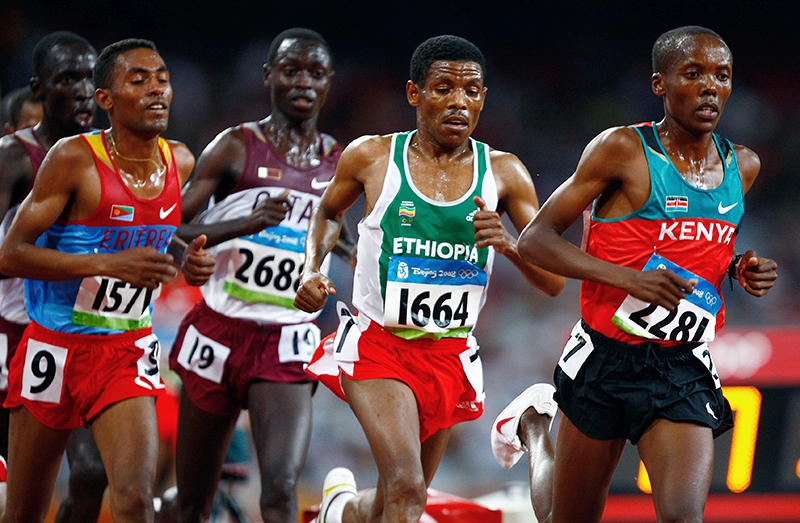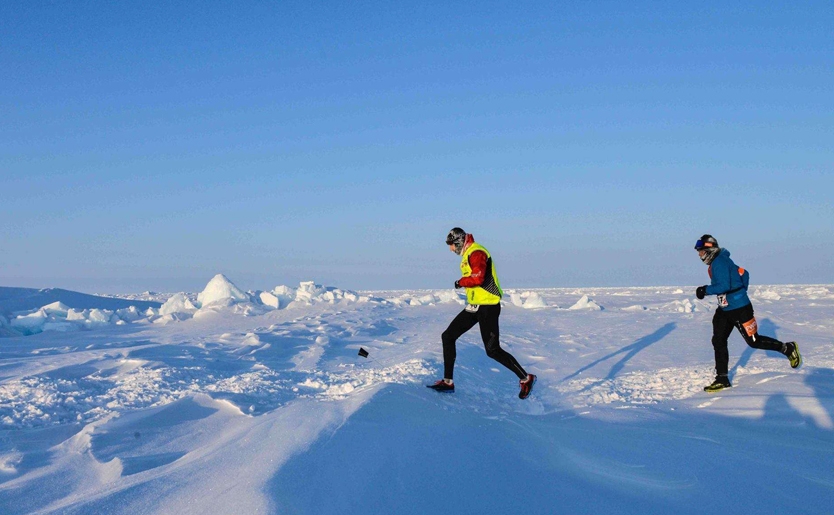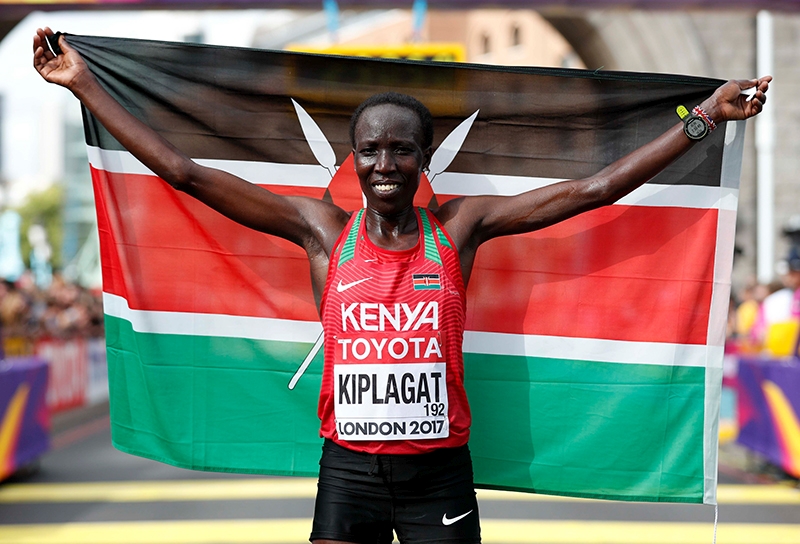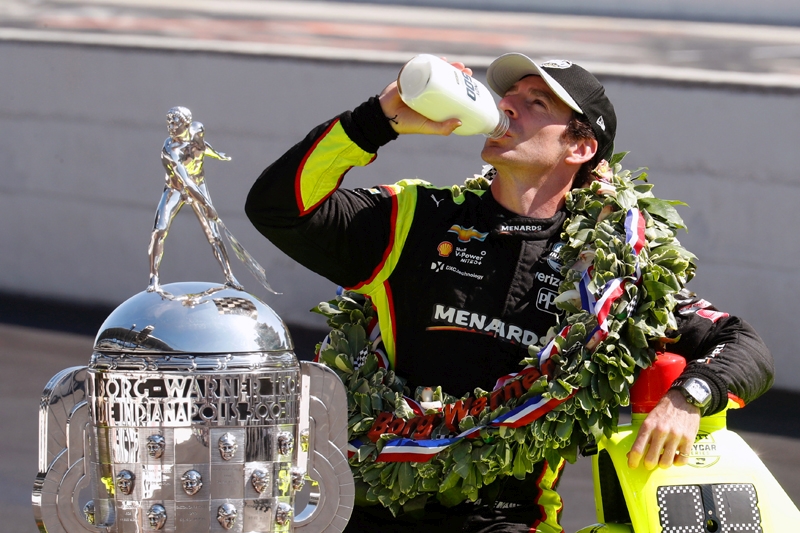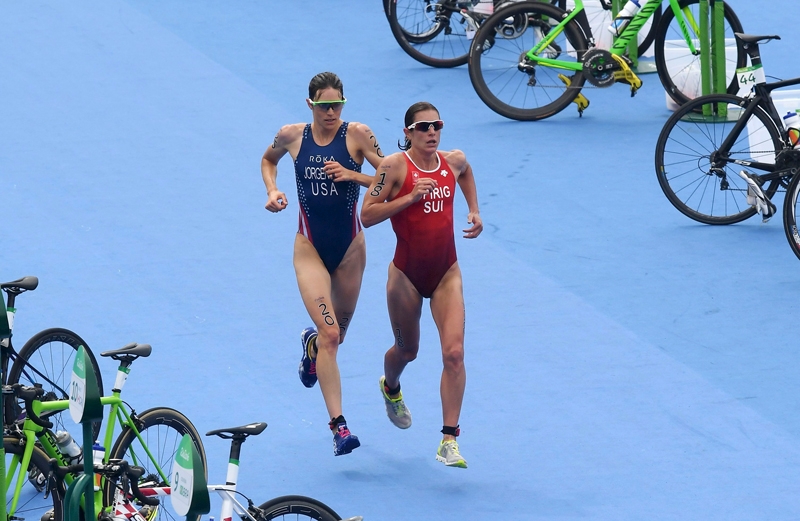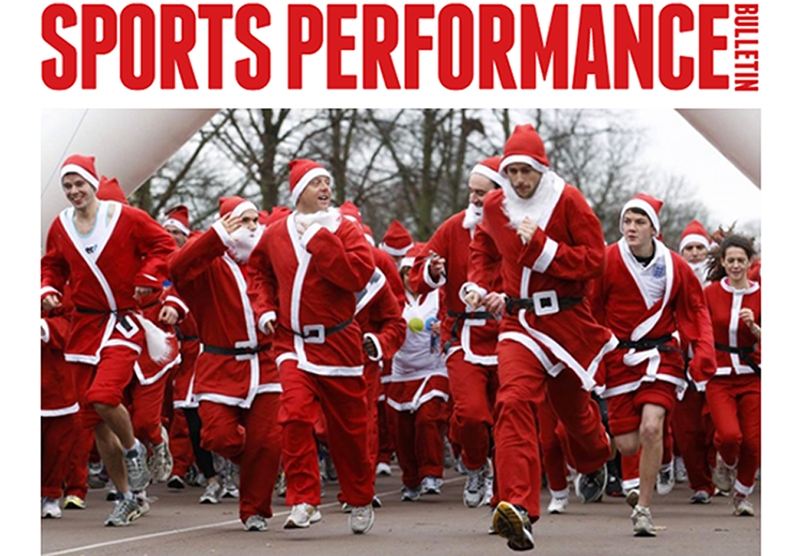You are viewing 1 of your 1 free articles. For unlimited access take a risk-free trial
Marathon training: learning lessons from the elites
Many runners look to the training and racing methods of elite runners to improve their own performance. In this article, Dan Robinson and Professor Andy Lane review some examples of elite athlete training schedules and tease out the implications for serious amateurs
Studying the training diary of an elite athlete shortly before a career best performance is a fascinating exercise for athlete, coach and practitioner. For athletes, it can also be a potential source of inspiration and practical information. For coaches, it can offer insight about the training an elite athlete does. For the professional practitioner meanwhile, it’s an example of a successful case study. However, all three should cognisant that any such study has a sample size of just one, and that generalisations should be applied with caution! Nevertheless, looking at the key building blocks of an elite marathon runner’s build up can reveal not only how this tallies with current scientific thinking, but also which elements might be usefully adopted, adapted or avoided.Simple elements
In thinking about the structure of any training plan, we can consider some simple elements to see how they contribute to the overall schedule. These are:- The amount of training (volume)
- The quality of that training (intensity)
- The rest which follows (recovery)
The big challenge for researchers, practitioners and athletes alike is to identify the type and amount of preconditioning required, which allows elite levels training to be adopted without injury. Most widely-used popular coaching publications enshrine the three principles of volume, intensity and recovery in one form or another(2-4). However, using data from elite athletes to gather an evidence-based approach to validate this can be challenging – partly because there is a lack of reliable data for the training of elite marathon runners. This is especially the case when considering the concentration of elite runners in East Africa, where usage of the internet to share data is less frequent, and training is not so well documented.
Volume
Elite marathon runners from the 1960s onwards have often reported huge training volumes coupled with almost frightening intensity. The accuracy of their training diaries in terms of distance and pace is hard to verify reliably, but there is little doubt that they trained extremely hard - and raced often. However, this anecdotal information in itself is not especially useful because a number of factors, including their lifestyle when growing up might have made them more robust. Additionally, how many runners had their careers blighted or ended by injury as a result of attempting to adopt these methods is not clear.Elite coaches and athletes alike still regularly report volumes well in excess of 100 miles per week. A typical week of Eliud Kipchoge’s build up to his World Marathon attempt in September 2017 is shown in table A ,and totals around 110 miles. Paula Radcliffe’s training around her world record marathon in 2003 sometimes exceeded 125 miles per week according to her coach Alex Stanton. Even during his extended period of dominance over 5000m and 10000m on the track, Mo Farah was running over 100 miles per week.
Sample training week for Eliud Kipchoge in build up to WR attempt at Berlin Marathon
32 1 FIGURE 1 PLAY HISTORY OF 2005 VS. 1985 ADOLESCENT
| Average hours playing outside | 1985 Child | 2005 Child | 2015 Child |
|---|---|---|---|
| Per week | 30 | 5 | ? |
| Per month | 1500 | 250 | ? |
| Per decade | 15000 | 2500 | ? |
It seems clear then that successful distance runners are callusing themselves for the rigours of their event by covering large distances. In order to benefit maximally from increasing volume though, the sub-elite runner needs to look at overall training load. This includes not only overall volume but also how these miles are made up, the optimum intensities contained therein and perhaps most crucially of all, the quality and timing of rest and recovery. The ideal training load provides the maximum stimulus without prompting illness or injury, and coaches at an elite level seek to find the blend of training.
Intensity/sessions
Many aspiring runners looking at the training of the elites seek to uncover a ‘magic bullet training session’, which is so epic that massive adaptation and racing glory will follow simply from repeating it! Inevitably this is a forlorn hope. As discussed above it is the cumulative effect of training which creates champions. Matt Fox observed Kipchoge’s training for his Berlin world record attempt and commented that “it certainly seemed to me that Eliud rarely went 100% in training.”This is all the more daunting when looking at the sessions he completed at anywhere between 2000-2500m altitude often on poor surfaces! However, it rings true with the philosophy of his coach Patrick Sang, and is perhaps further evidenced by the longevity of Kipchoge’s career in comparison to many Kenyan elites who have produced a few stunning performances in a purple patch before disappearing into obscurity.
Our first lesson then is that sessions need not leave the athlete completely broken and in need of several days recovery to prove beneficial. Indeed, this would be counter-productive as it would compromise training on ensuing days and limit the amount of volume which can be achieved.
Running economy and lactate threshold
Recently, scientists have begun to focus on the importance of improving running economy to produce better racing results in the long term. Professor Andy Jones, of recent ‘Nike Breaking2 fame’, produced a famous study detailing the improvements in Paula Radcliffe’s running economy over almost a decade(5). Given that this study also showed that Paula’s VO2max (maximum aerobic capacity) remained relatively stable over a long period, running economy seems to make sense as more fertile area for gains – along with improved lactate threshold (LT).LT training has become increasingly fashionable over recent years. Unfortunately, the language used to discuss this area in popular literature has become increasingly imprecise. Terms such as “tempo”, “threshold”, “steady state” and others are regularly used by runners and coaches alike in relation to longer, more intense sessions. However, studies focusing on the aerobic-anaerobic transition suggest that this is an important concept for performance diagnosis and intensity prescription in endurance sports(6). Perhaps one key message to serious amateur runners is that properly establishing current LT and maximum lactate in the steady state (MLSS) levels will lead to more accurately prescribed training zones and thus increased the benefit garnered from such sessions.
The success of the training systems of leading Italian endurance coach Renato Canova (who has trained many top Kenyan runners - see below) and others provides real world support for the view that this kind of intense training is important in preparing a successful marathon. Examples of Canova’s recommended marathon sessions are given in table B. These are clearly designed to improve LT and running economy over an extended period of time.
Renato Canova: making Kenyan running great again

Table 2 Renato Canova sample training schedule
| METHODS | QUANTITY | EXAMPLE (2H.08 M/2H.28’W) |
| FAST CONTINUOUS RUN | Time: 20’-40’ Speed: 104-107% M.P.R | 10km. (29’2920â€)10km. (33’/33’30â€) |
| FAST PROGRESSIVE RUN | Time: 20’-40’ Speed: 102-108% M.P.R | 12km. (35’/20â€)10km. (9’05â€/8’45â€/8’35â€) |
| LONG SPEED VARIATIONS | Distance: 5000/7000m Volume: 15-21 Km Speed: 103-107% R.M | 3x5000m. increasing speed(17’15â€/17’/16’45â€) Rec. 3’ |
| MEDIUM SPEED VARIATION | Distance: 3000/5000m Volume: 10-12Km Speed: 105-108% R.M | 5000/4000m/3000m. (14’30â€/11’25â€/8’20â€) Rec.3’ |
| SHORT SPEED VARIATIONS | Distance: 100/5000m Volume: 10-12Km Speed:106-110% R.M | 10x1000m at 2’45†rec. 2’5x2000 at 6’30†rec.3’3000 (8’15â€) rec.4’+ |
| MIXED SPEED VARIATIONS | Distance: 400-3000 Total Volume:10-12Km Speed: 107-112% R.M | 2000 (5’25â€)Rec. 3 +10x400m (1’02â€)Rec. 1’8km. even paced with heart rate |
Recovery
The relative impact of adequate recovery to allow adaptation still seems to be somewhat underplayed in popular literature, although awareness has increased more recently. Technology for runners has developed beyond GPS and now sleep monitoring is readily available through various apps and devices. However, the accuracy of data produced and its interpretation remain problematic.A recent study looked at the impact of training “overreach” through volume or intensity on the recovery and ultimately performance of athletes(7). The study concluded that a moderate link existed between overreaching in training, sleep disturbance and the prevalence of infection in athletes. The authors did note however that this moderate impact in the context of elite performance could certainly prove to have a significant impact on outcome. Recommendations from the study included incorporating regular naps and avoiding high-intensity training early in the morning. A glance at elite training diaries would reveal that these strategies are already widely in use.
Any coach will take into account overall stress/load when designing a training schedule. In the case of many elite athletes, this need not include consideration of time at the office, family commitments and so on. However, this is obviously not the case for the majority of amateurs. As such, while we can adopt an elite mentality to designing our training by prioritising rest and recovery, we must be mindful of the additional load which our daily lives can represent. Whilst it may be possible over time to approach elite level training volumes and intensities, we would need to enjoy the environmental conditions which facilitate this. The ability to eat, sleep, train and do little else is not a realistic option for most of us.
The take-home messages
There are many lessons which we can learn from elite athletes. In order for them to be effective in the long term though, we need to understand the underlying principles which guide their approach rather than seek to mimic individual sessions or copy them on a more superficial level. Here are the key points:- Prioritise recovery. It is almost a cliché but the majority of athletes diminish the adaptation from training by failing to adequately recover. The quality of as well as the quantity of rest is vital.
- Be specific. LT and MLSS work are important sessions for developing the systems required to run a successful marathon.
- There are no magic sessions or silver bullet methods to improve performance, however impressive some elite training logs may appear. Elite athletes achieve improvements the same way as recreational runners do - by consistently developing their endurance ability over time with hard but sustainable training.
References
- BMJ Open Sport & 2018; Exercise Medicine 4(1).
- Daniels, J. (2014). Daniels’ Running Formula, 3rd Edition. Human Kinetics
- Humphreys L. (2012). Hansons Marathon Method. Velopress
- Pfitzinger, P & Douglas, S. (2009). Adavanced Marathoning, 2nd Edition. Human Kinetics
- Int J Sports Sci Coach 2006. Volume 1, Number 2
- Sports Medicine 2006 39(6): 469-490.
- Medicine & Science in Sports & Exercise 46(5): 1036-1045.
Newsletter Sign Up
Testimonials
Dr. Alexandra Fandetti-Robin, Back & Body Chiropractic
Elspeth Cowell MSCh DpodM SRCh HCPC reg
William Hunter, Nuffield Health
Newsletter Sign Up
Coaches Testimonials
Dr. Alexandra Fandetti-Robin, Back & Body Chiropractic
Elspeth Cowell MSCh DpodM SRCh HCPC reg
William Hunter, Nuffield Health
Keep up with latest sports science research and apply it to maximize performance
Today you have the chance to join a group of athletes, and sports coaches/trainers who all have something special in common...
They use the latest research to improve performance for themselves and their clients - both athletes and sports teams - with help from global specialists in the fields of sports science, sports medicine and sports psychology.
They do this by reading Sports Performance Bulletin, an easy-to-digest but serious-minded journal dedicated to high performance sports. SPB offers a wealth of information and insight into the latest research, in an easily-accessible and understood format, along with a wealth of practical recommendations.
*includes 3 coaching manuals
Get Inspired
All the latest techniques and approaches
Sports Performance Bulletin helps dedicated endurance athletes improve their performance. Sense-checking the latest sports science research, and sourcing evidence and case studies to support findings, Sports Performance Bulletin turns proven insights into easily digestible practical advice. Supporting athletes, coaches and professionals who wish to ensure their guidance and programmes are kept right up to date and based on credible science.


